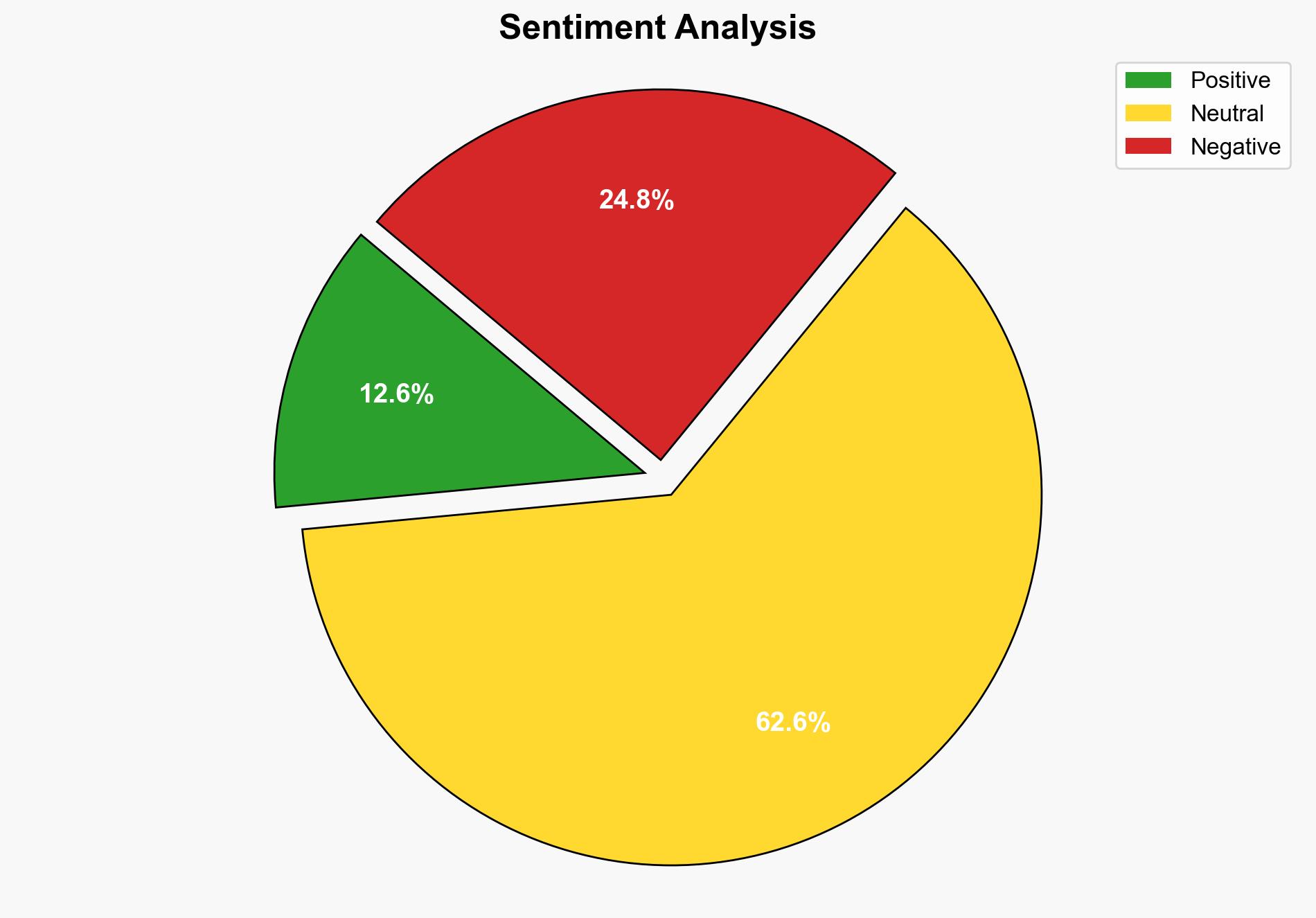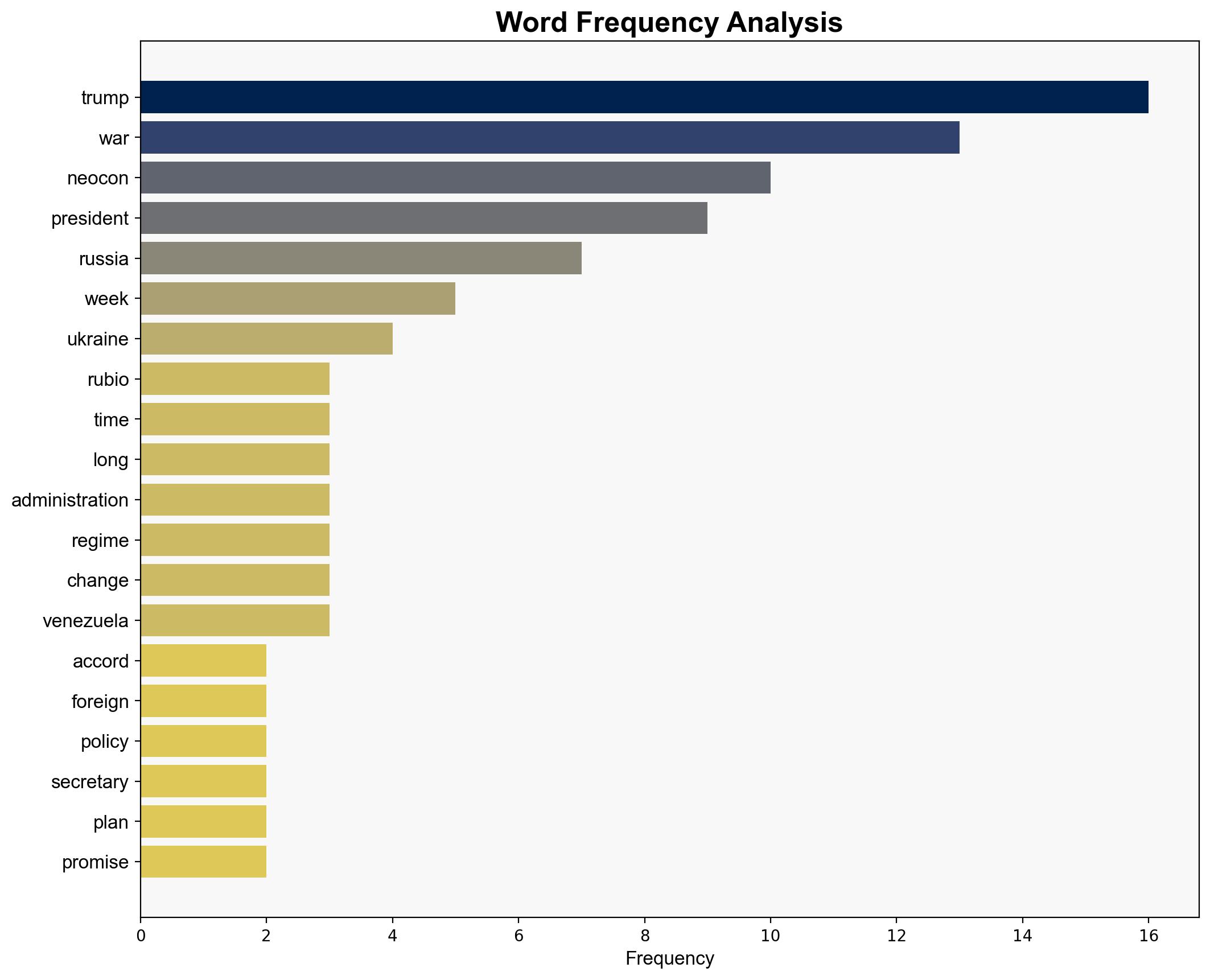The Rubio Doctrine Neocons Are Back – Antiwar.com
Published on: 2025-10-28
Intelligence Report: The Rubio Doctrine Neocons Are Back – Antiwar.com
1. BLUF (Bottom Line Up Front)
The strategic judgment indicates a moderate confidence level that the resurgence of neoconservative influence, as suggested by recent actions and rhetoric, is primarily a tactical maneuver rather than a full strategic shift in U.S. foreign policy. The most supported hypothesis is that these actions are designed to project strength and leverage in international negotiations rather than a commitment to prolonged military engagements. Recommended action includes close monitoring of policy shifts and public statements for further indications of strategic intent.
2. Competing Hypotheses
1. **Hypothesis A**: The recent actions and rhetoric signify a genuine resurgence of neoconservative influence in U.S. foreign policy, aiming for regime change and increased military interventions.
2. **Hypothesis B**: The actions are primarily posturing for strategic leverage in negotiations with Russia and other geopolitical actors, rather than a commitment to neoconservative policies.
Using the Analysis of Competing Hypotheses (ACH) 2.0, Hypothesis B is better supported. The evidence of mixed signals, such as the Alaska summit and ceasefire discussions, suggests a strategic rather than ideological motivation.
3. Key Assumptions and Red Flags
– **Assumptions**: Hypothesis A assumes a cohesive neoconservative agenda within the administration, while Hypothesis B assumes strategic flexibility and opportunism.
– **Red Flags**: The inconsistency between public statements and actions, such as simultaneous sanctions and peace overtures, indicates potential deception or strategic ambiguity.
– **Blind Spots**: Lack of insight into internal decision-making processes and potential influence of external actors on policy decisions.
4. Implications and Strategic Risks
– **Geopolitical Risks**: Escalation in Ukraine or Venezuela could lead to broader regional instability.
– **Economic Risks**: Sanctions and military actions may disrupt global markets, particularly in the energy sector.
– **Cyber and Psychological Risks**: Increased tensions could lead to cyberattacks and information warfare, impacting public perception and policy support.
5. Recommendations and Outlook
- Monitor diplomatic communications and military deployments for signs of escalation or de-escalation.
- Engage in backchannel diplomacy to clarify intentions and reduce miscalculations.
- Scenario Projections:
- Best Case: Strategic posturing leads to successful negotiations and de-escalation.
- Worst Case: Misinterpretation of actions results in military conflict.
- Most Likely: Continued strategic ambiguity with periodic escalations and de-escalations.
6. Key Individuals and Entities
– Marco Rubio
– Donald Trump
– Vladimir Putin
– Volodymyr Zelensky
– Scott Bessent
– Lindsey Graham
– John Bolton
7. Thematic Tags
national security threats, geopolitical strategy, military posturing, diplomatic negotiations





